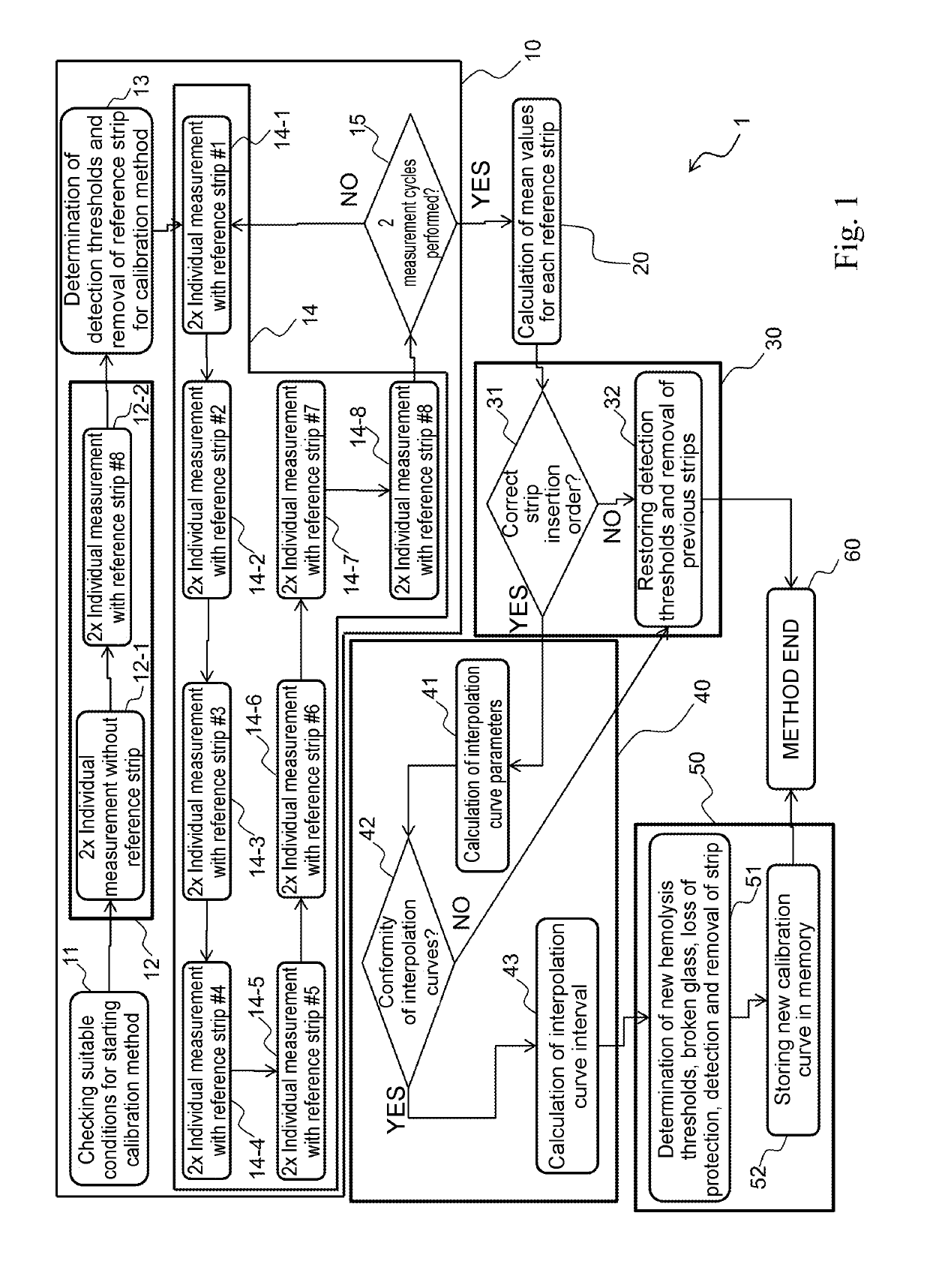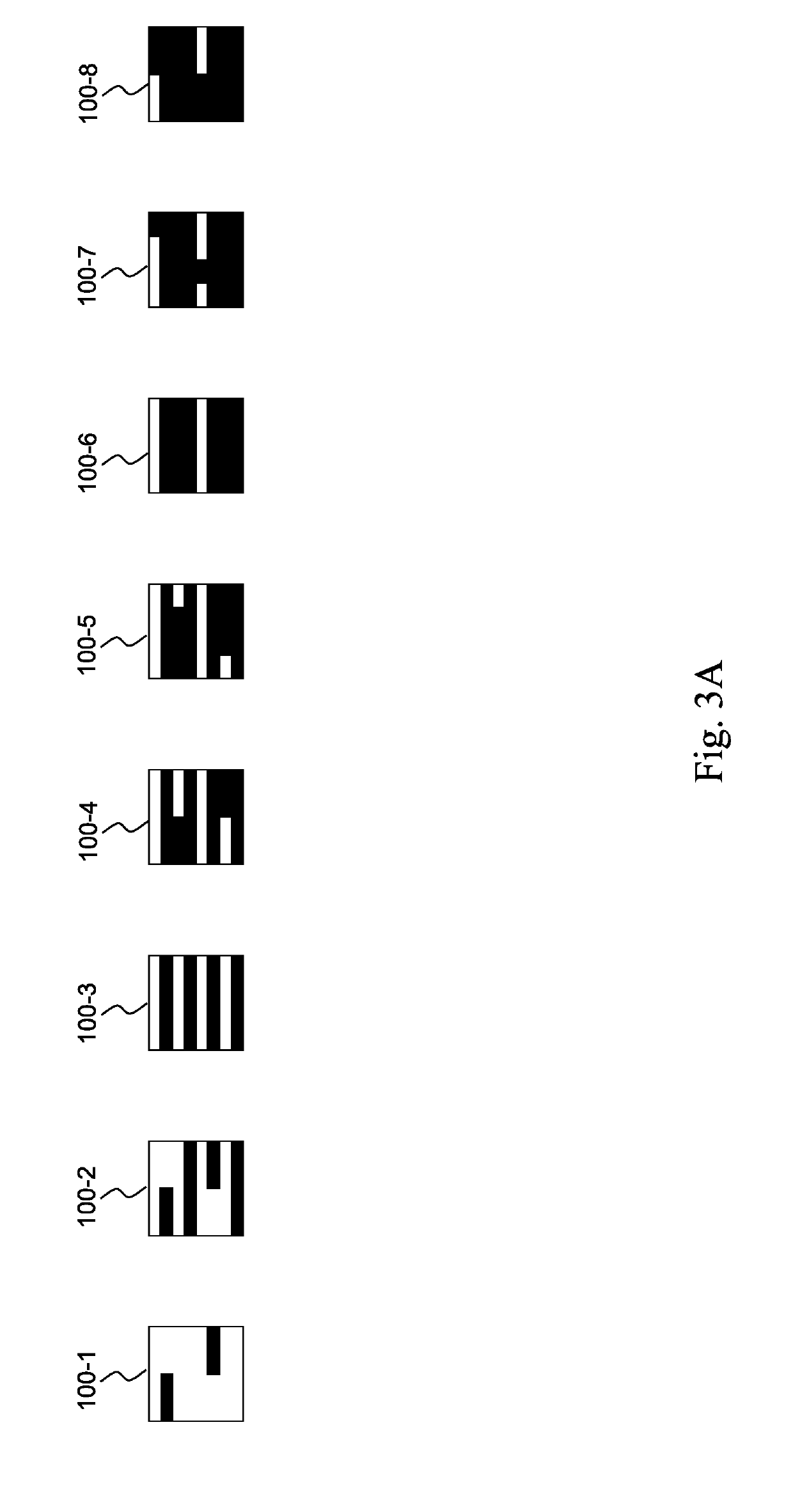Method for Calibrating a Device for Measuring the Concentration of a Biological Compound
a technology of biological compound and calibration method, which is applied in the field of medical devices, can solve the problems of large quantity of bilirubin produced and stored in the blood, affect the health of infants, and inability to measure the concentration of bilirubin, etc., and achieves the effects of simple calibration method, high accuracy of measurement, and convenient use in developing countries
- Summary
- Abstract
- Description
- Claims
- Application Information
AI Technical Summary
Benefits of technology
Problems solved by technology
Method used
Image
Examples
Embodiment Construction
[0043]FIG. 1 shows, by way of example, the flow diagram 1 representing in detail the steps of the calibration method according to the invention.
[0044]The calibration method is performed on a processing unit (e.g. a microprocessor) mounted inside a portable opto-electronic device, which performs the measure of the concentration of a biological compound (e.g. concentration of bilirubin in blood samples), using a plurality of reference strips corresponding to predefined (i.e. known) concentration values of the biological compound (e.g. bilirubin).
[0045]For the purpose of explaining the flow diagram 1, for simplicity it is considered that the biological sample is a blood sample and that the calibration method is used for a device for measuring the concentration of bilirubin.
[0046]Reference number 10 indicates the step of measuring the reference strips corresponding to known bilirubin concentration values.
[0047]For the purposes of explaining the invention, a particular embodiment has bee...
PUM
| Property | Measurement | Unit |
|---|---|---|
| concentration | aaaaa | aaaaa |
| concentration | aaaaa | aaaaa |
| concentration | aaaaa | aaaaa |
Abstract
Description
Claims
Application Information
 Login to View More
Login to View More - R&D
- Intellectual Property
- Life Sciences
- Materials
- Tech Scout
- Unparalleled Data Quality
- Higher Quality Content
- 60% Fewer Hallucinations
Browse by: Latest US Patents, China's latest patents, Technical Efficacy Thesaurus, Application Domain, Technology Topic, Popular Technical Reports.
© 2025 PatSnap. All rights reserved.Legal|Privacy policy|Modern Slavery Act Transparency Statement|Sitemap|About US| Contact US: help@patsnap.com



